Neoplasm – Friday Pop Quiz 1/24
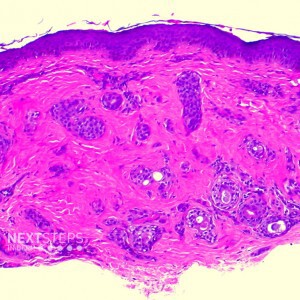 The clear-cell variant of this neoplasm is associated with which of the following?
A. Brooke-Spiegler syndrome
B. Cowden disease
C. Rombo syndrome
D. Diabetes mellitus
E. Hypothyroidism
To find out the correct answer and read the explanation, click here.
Brought to you by our brand partner Derm In-Review. A product of SanovaWorks.
…
The clear-cell variant of this neoplasm is associated with which of the following?
A. Brooke-Spiegler syndrome
B. Cowden disease
C. Rombo syndrome
D. Diabetes mellitus
E. Hypothyroidism
To find out the correct answer and read the explanation, click here.
Brought to you by our brand partner Derm In-Review. A product of SanovaWorks.
…
 The clear-cell variant of this neoplasm is associated with which of the following?
A. Brooke-Spiegler syndrome
B. Cowden disease
C. Rombo syndrome
D. Diabetes mellitus
E. Hypothyroidism
To find out the correct answer and read the explanation, click here.
Brought to you by our brand partner Derm In-Review. A product of SanovaWorks.
…
The clear-cell variant of this neoplasm is associated with which of the following?
A. Brooke-Spiegler syndrome
B. Cowden disease
C. Rombo syndrome
D. Diabetes mellitus
E. Hypothyroidism
To find out the correct answer and read the explanation, click here.
Brought to you by our brand partner Derm In-Review. A product of SanovaWorks.
… 

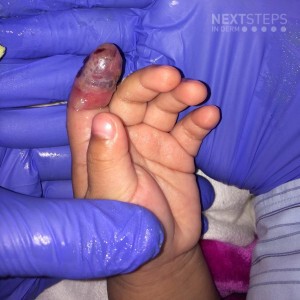 Which of the following is the most appropriate treatment of this infant’s painful finger?
A. Incision and drainage
B. Acyclovir
C. Foscarnet
D. Dicloxacillin
E. Clindamycin
To find out the correct answer and read the explanation, click here.
Brought to you by our brand partner Derm In-Review. A product of SanovaWorks.
…
Which of the following is the most appropriate treatment of this infant’s painful finger?
A. Incision and drainage
B. Acyclovir
C. Foscarnet
D. Dicloxacillin
E. Clindamycin
To find out the correct answer and read the explanation, click here.
Brought to you by our brand partner Derm In-Review. A product of SanovaWorks.
… 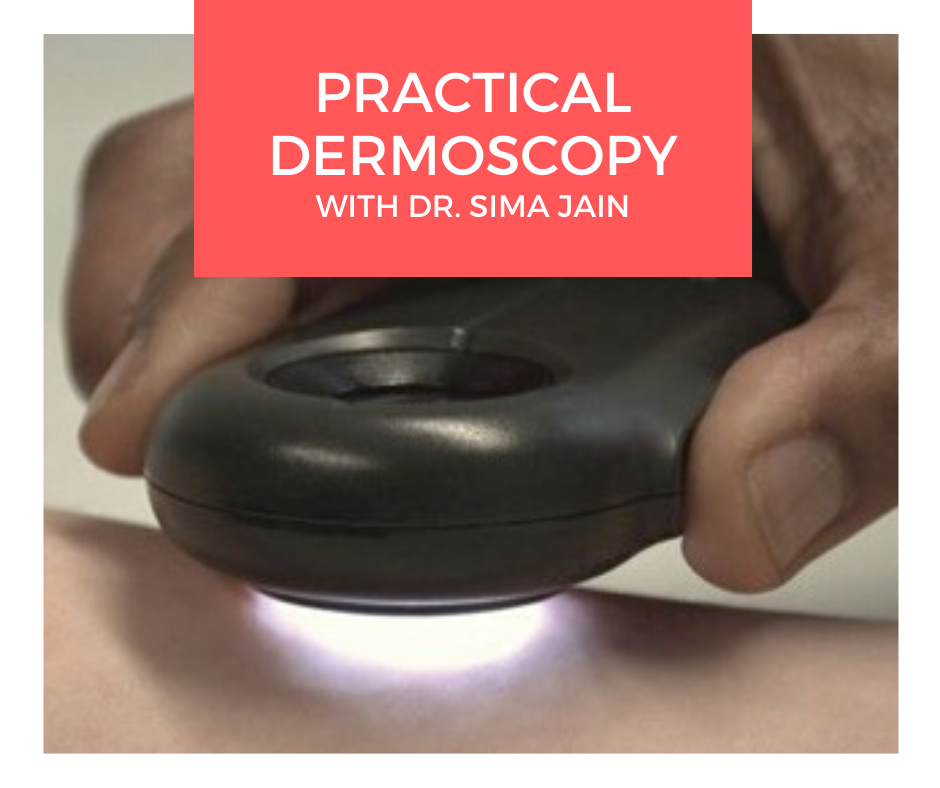 Dermoscopy, also known as epiluminescence microscopy, epiluminoscopy or skin surface microscopy, is an important way to visualize subsurface structures in the epidermis and dermis. In a 2-part series, Dr. Sima Jain reviews the evaluation of pigmented lesions, and the different vessel morphologies and patterns along with a discussion of specific findings in select cutaneous infections.
Read part …
Dermoscopy, also known as epiluminescence microscopy, epiluminoscopy or skin surface microscopy, is an important way to visualize subsurface structures in the epidermis and dermis. In a 2-part series, Dr. Sima Jain reviews the evaluation of pigmented lesions, and the different vessel morphologies and patterns along with a discussion of specific findings in select cutaneous infections.
Read part … 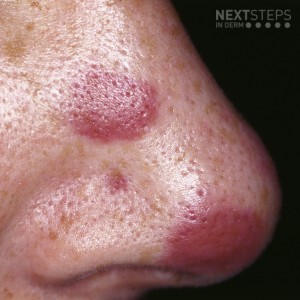 Biopsy of one of the lesions pictured reveals spindle cells forming slit-like vascular channels. Which of the following is also associated with the cause of these lesions?
A. Bacillary angiomatosis
B. Merkel cell carcinoma
C. Angiosarcoma
D. Multicentric Castleman disease
E. Nasopharyngeal carcinoma
To find out the correct answer and read the explanation, click here.
Brought t …
Biopsy of one of the lesions pictured reveals spindle cells forming slit-like vascular channels. Which of the following is also associated with the cause of these lesions?
A. Bacillary angiomatosis
B. Merkel cell carcinoma
C. Angiosarcoma
D. Multicentric Castleman disease
E. Nasopharyngeal carcinoma
To find out the correct answer and read the explanation, click here.
Brought t … 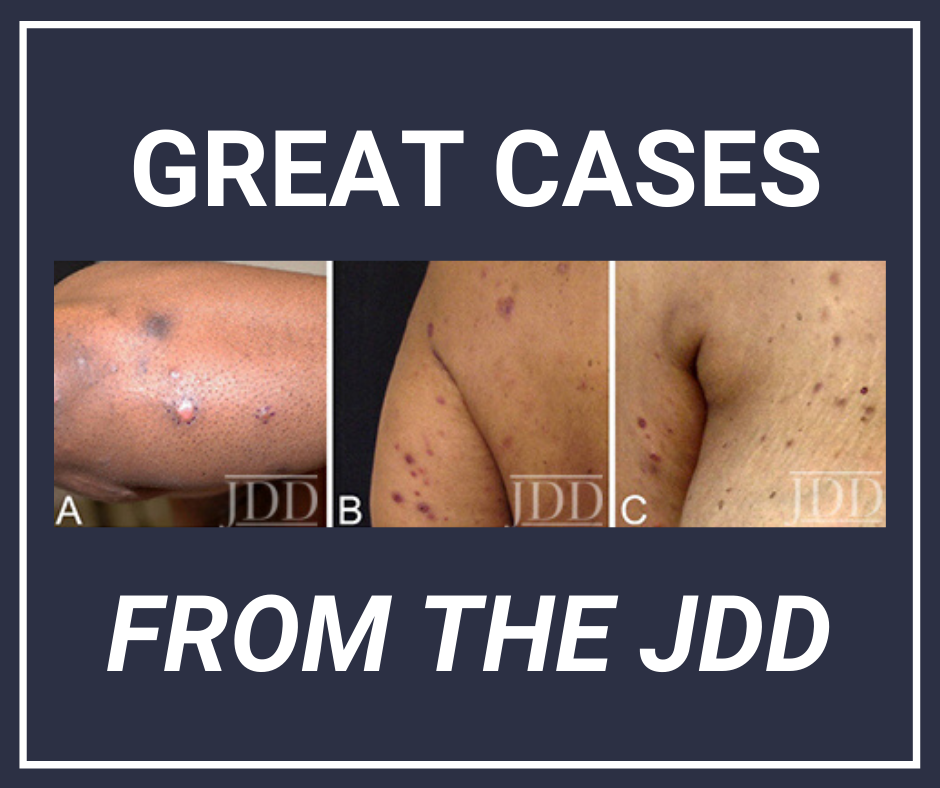 Lymphomatoid papulosis (LyP) is a CD30+ T-cell lymphoproliferative disorder (LPD) presenting as a recurrent eruption of papules and nodules which resolve spontaneously. CD30+ LPD prevalence in African American (AA)/Black patients is lower compared to White patients. CD30+ LPD has been recently reported to have worse outcomes in AA patients compared to White patients.
A retrospective chart revie …
Lymphomatoid papulosis (LyP) is a CD30+ T-cell lymphoproliferative disorder (LPD) presenting as a recurrent eruption of papules and nodules which resolve spontaneously. CD30+ LPD prevalence in African American (AA)/Black patients is lower compared to White patients. CD30+ LPD has been recently reported to have worse outcomes in AA patients compared to White patients.
A retrospective chart revie …